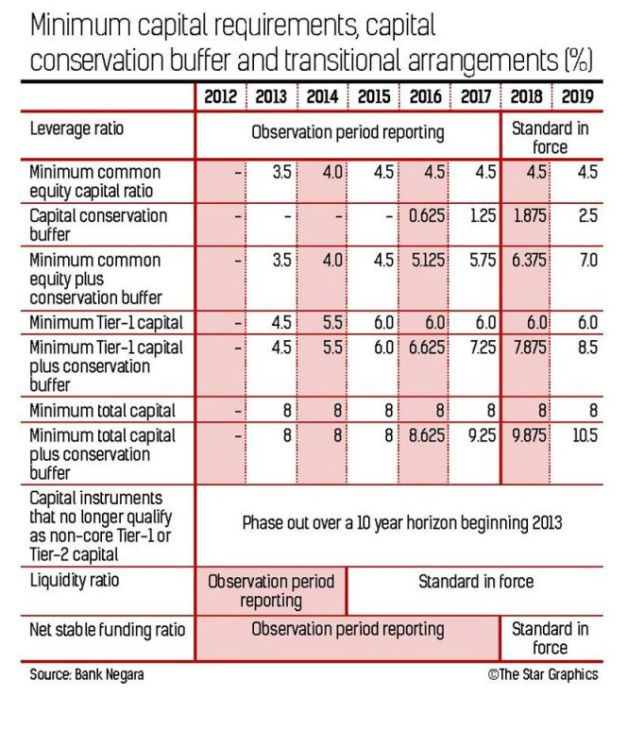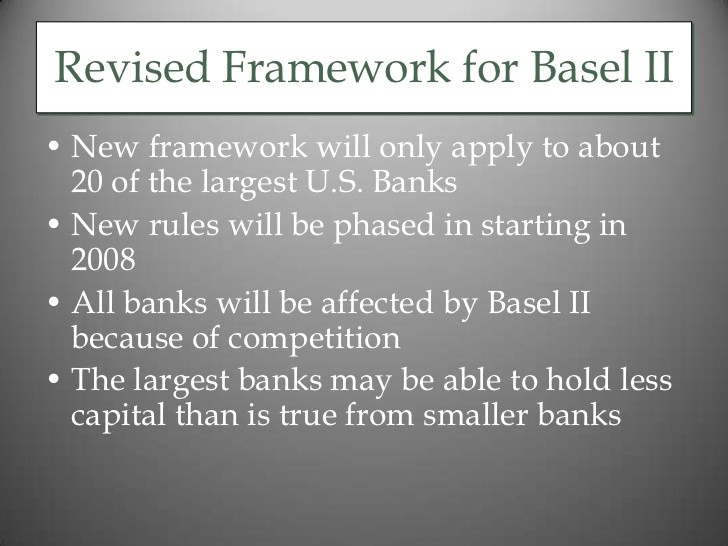How Basel 1 Affected Banks
Post on: 16 Март, 2015 No Comment

From 1965 to 1981 there were about eight bank failures (or bankruptcies) in the United States. Bank failures were particularly prominent during the ’80s, a time which is usually referred to as the savings and loan crisis . Banks throughout the world were lending extensively, while countries’ external indebtedness was growing at an unsustainable rate. (For related reading, see Analyzing A Bank’s Financial Statements .)
As a result, the potential for the bankruptcy of the major international banks because grew as a result of low security. In order to prevent this risk, the Basel Committee on Banking Supervision. comprised of central banks and supervisory authorities of 10 countries, met in 1987 in Basel, Switzerland.
The committee drafted a first document to set up an international ‘minimum’ amount of capital that banks should hold. This minimum is a percentage of the total capital of a bank, which is also called the minimum risk-based capital adequacy. In 1988, the Basel I Capital Accord (agreement) was created. The Basel II Capital Accord follows as an extension of the former, and was implemented in 2007. In this article, we’ll take a look at Basel I and how it impacted the banking industry.
The Purpose of Basel I
In 1988, the Basel I Capital Accord was created. The general purpose was to:
1. Strengthen the stability of international banking system.
2. Set up a fair and a consistent international banking system in order to decrease competitive inequality among international banks.
The basic achievement of Basel I has been to define bank capital and the so-called bank capital ratio. In order to set up a minimum risk-based capital adequacy applying to all banks and governments in the world, a general definition of capital was required. Indeed, before this international agreement, there was no single definition of bank capital. The first step of the agreement was thus to define it.
Two-Tiered Capital
Basil I defines capital based on two tiers:

1. Tier 1 (Core Capital). Tier 1 capital includes stock issues (or share holders equity) and declared reserves, such as loan loss reserves set aside to cushion future losses or for smoothing out income variations.
2. Tier 2 (Supplementary Capital). Tier 2 capital includes all other capital such as gains on investment assets, long-term debt with maturity greater than five years and hidden reserves (i.e. excess allowance for losses on loans and leases). However, short-term unsecured debts (or debts without guarantees), are not included in the definition of capital.
Credit Risk is defined as the risk weighted asset (RWA) of the bank, which are banks assets weighted in relation to their relative credit risk levels. According to Basel I, the total capital should represent at least 8% of the bank’s credit risk (RWA). In addition, the Basel agreement identifies three types of credit risks:
- The on-balance sheet risk (see Figure 1 for example).
- The trading off-balance sheet risk. These are derivatives. namely interest rates, foreign exchange. equity derivatives and commodities .
- The non-trading off-balance sheet risk. These include general guarantees, such as forward purchase of assets or transaction-related debt assets.
Let’s take a look at some calculations related to RWA and capital requirement. Figure 1 displays predefined categories of on-balance sheet exposures, such as vulnerability to loss from an unexpected event, weighted according to four relative risk categories.














